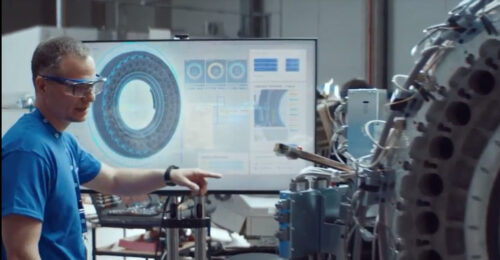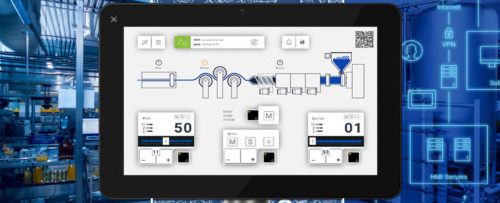Internet advances fosterenterprise asset management solutions
Enterprise asset management (EAM) is not a new concept. Companies of all sizes have long recognized the benefits that result from standardizing maintenance methods, practices, and procedures across the enterprise.
Enterprise asset management (EAM) is not a new concept. Companies of all sizes have long recognized the benefits that result from standardizing maintenance methods, practices, and procedures across the enterprise.
Until recently, it has been both expensive and difficult to maintain the hardware and software infrastructure required for EAM. Today, however, thanks to the web, cost effective and simple methods are available for implementing such a system for small and large facilities, alike.
EAM offers a number of advantages.
– The ability to share maintenance solutions across departments and across sites.
– A large database of asset history available for statistical analysis.
– The ability to transfer employees permanently or during times of increased demand because training and procedures are consistent throughout the enterprise.
– Consistent application of key performance indicators to all maintenance groups and internal and external service providers. Department or plant performance can be analyzed in terms of identifying and implementing best practices across the company.
– One-time integration to corporate financial and enterprise resource planning (ERP) systems. Integration and supporting procedures can be made part of an enterprise-wide training program and used by all enterprise locations.
Historical perspectives
Historically, options to achieve this type of enterprise-wide implementation have been complex and expensive. Two alternatives were available.
1. Implement plant-centric methods. Individual sites would set up and maintain their own systems. Requirements included onsite expertise to maintain hardware, software, and the relational database management system (RDMS). The central organization then must play the often-difficult role of policeman to ensure that the EAM is implemented consistently and that terminology, data structures, and methods are the same across all plants. Gaining the value of enterprise reporting meant either establishing complex reporting tools that access multiple data sources or attempting to roll up these data corporately and analyzing them on a consolidated database.
2. Implement the EAM model. Accomplishing this task means establishing one system accessed by all users across the organization. This solution has been very complex, requiring major expenditures in computer infrastructure and software. The infrastructure to support this effort typically requires a large, central database server and either a single central server or multiple distributed application servers with remote sites accessing the data and application through a local area network (LAN) or wide area network (WAN) using expensive, dedicated communication lines.
Technology advances have now made another alternative available to enterprises of all sizes. In essence, these systems can now be accomplished by implementing the EAM over the internet or corporate intranet. At its simplest, the configuration might include establishing minor functionality such as making work and purchase requests accessible through the internet/intranet. Or, it might be the development of a fully functional, web-enabled EAM product. Significant productivity could be gained by having all employees (limited only by their security profile) able to enter work or material requests, query information, and gather data to perform analyses.
The way of the internet
The internet and intranet have provided an inexpensive way of gaining access to a corporate-wide infrastructure. Workers need only a web browser and internet access to use the system. Implementing an EAM strategy over the internet/intranet lets all employees at all sites share information about asset-specific data, procedures, and methods. If one site encounters and solves a problem with a particular asset, other sites also benefit from having that solution at their fingertips.
This structure also ensures that procedures, material safety data sheets, and standards (such as those required for ISO certification) are uniform and readily accessible to all sites in the enterprise.
If a site cannot get a part it needs from its usual supplier for three days, perhaps it can obtain it in one day from another company site that has it in stock. An EAM system lets a user easily locate the part, determine if it has been reserved for another job, balance priorities, and request to have it shipped right away.
Productivity gains are numerous: Sites can report work, check on job status, and order and follow up on material delivery dates without calling the work order clerk, maintenance planner, supervisor, or buyer. Users can search for information directly from vendors and suppliers or from other corporate locations such as job plans or preventive maintenance. Inventory information, asset specifications, and drawings can be downloaded directly into a site’s database. Operating data can be entered directly into an EAM, eliminating the need to fill out log sheets manually. Outside suppliers under contract can be given direct access to quantities on hand in inventory and provide just-in-time material deliveries based on actual demand. No time or expense need be incurred using manual purchase requests and purchase orders.
Advantages of the web
Use of the web for an EAM system provides many technical advantages.
– Multiple platform support . In many cases, sites run different hardware, software, or even operating systems.
– Use of existing equipment. Many traditional client/server setups require high-end computers at each workstation. In this configuration, only a system that can run a web-browser is required.
– Centralized support. A central source for application support and maintenance ensures consistent use and accessibility for all sites.
– Easier and quicker upgrades. EAM software revisions can be made by simply loading the new program on the centralized application server rather than each individual server, or even worse, on every workstation.
– Enhanced traditional client/server installations. Internet configurations give remote sites or casual users access to the EAM without costly implementation.
– Support for growth. Scalable systems are easy to expand, adding access as needed at very little cost.
As maintenance practices evolve, a web-implemented EAM solution makes it easier to roll out business process enhancements incrementally. Methodology is consistent throughout the enterprise, helping to ensure the productivity gains or cost savings associated with a new business practice are realized by all sites immediately rather than being implemented site-by-site over time.
Use of the web makes the benefits of an EAM system available to enterprises of all sizes. Although once affordable for only very large companies, this methodology is now accessible to just about everyone thanks to the proliferation of internet resources.
— Edited by Jeanine Katzel, Senior Editor, 630-320-7142, jkatzel@cahners.com
Key concepts
Maintaining the infrastructure required for EAM is now cost effective and simple thanks to the web.
Internet access and a web-browser let employees at all sites share information about asset-specific data, procedures, and methods.
Internet-based EAM yields numerous productivity gains, including the ability to report work, check job status, and search for vendor information .
More info
The author is available to answer technical questions about this article. He may be reached at 905-632-8000. The company web site is located at www.ivara.com.
Additional helpful information on CMMS and the internet may be found in Internet Guide for Maintenance Management by Joel Levitt, published by Industrial Press, 200 Madison Ave., New York, NY 10016; 212-889-6330; fax: 212-545-8327; web site: www. industrialpress.com.
Do you have experience and expertise with the topics mentioned in this content? You should consider contributing to our CFE Media editorial team and getting the recognition you and your company deserve. Click here to start this process.





